Donation template letter
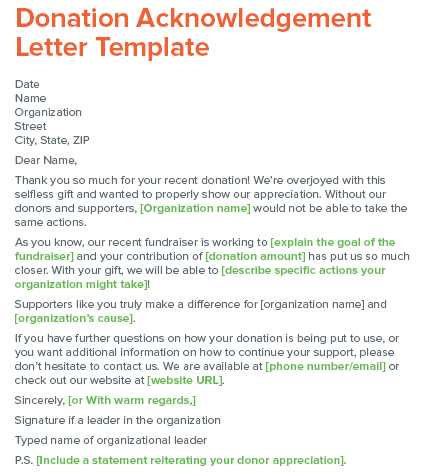
Write with clarity and directness when requesting donations. Address the recipient by name and personalize the message based on their potential connection to your cause. Explain how their support can make a meaningful difference in a straightforward manner. Be concise while conveying the urgency or specific need, and avoid unnecessary jargon. A well-crafted letter speaks to the reader’s desire to contribute to something impactful.
Provide a clear purpose. Outline what the funds will be used for and how they will directly benefit the community or project. A recipient should understand exactly what their contribution will help achieve, making the request feel purposeful and grounded in real outcomes.
Include an actionable request. Rather than leaving the donation process vague, provide details on how they can contribute. Whether it’s by check, online, or in-kind, be sure to give clear steps on how the recipient can take action. This makes it easier for them to respond without confusion.
Donation Template Letter Guide
Write a donation template letter with a clear structure. Start with a greeting that acknowledges the recipient by name. This personal touch adds sincerity to your request.
Key Components of a Donation Letter
- Opening Statement: Directly state the purpose of the letter. Be clear and concise, explaining why you’re seeking the donation and how it will be used.
- Introduction to the Cause: Briefly describe the organization or event and its impact. Provide specific examples of past successes, if available.
- Call to Action: Clearly outline how the recipient can contribute, whether it’s through monetary donations, goods, or volunteer work. Make it easy for them to help.
- Closing Remarks: Express gratitude for their consideration and mention any next steps, like a follow-up or contact information for questions.
Tips for Writing an Effective Letter
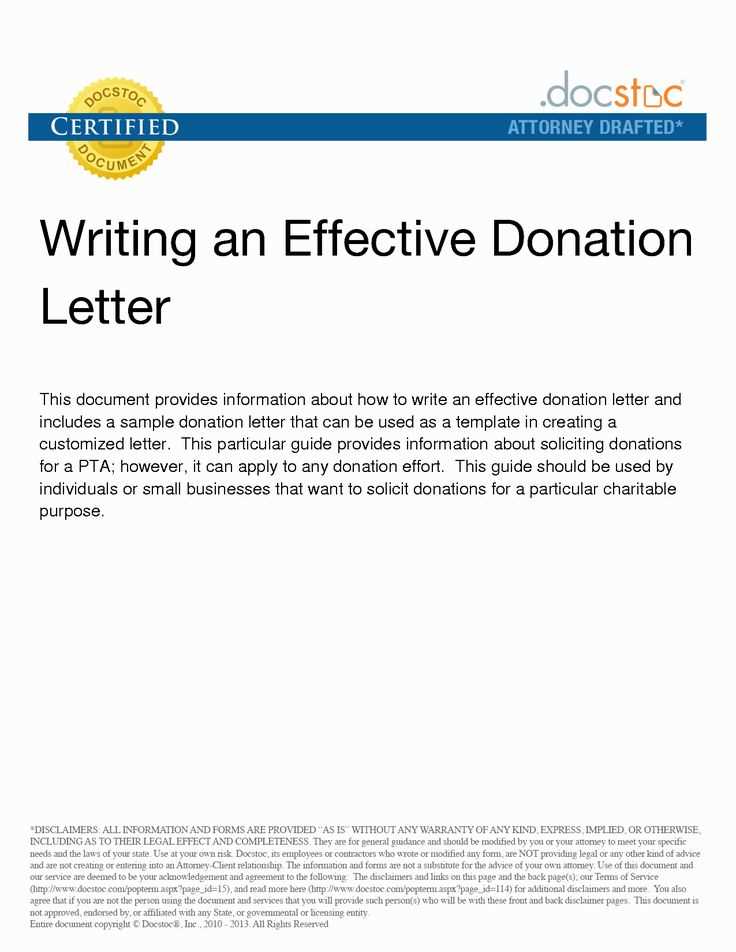
- Keep the tone professional but friendly, maintaining respect and courtesy throughout.
- Focus on the recipient’s potential impact–make them feel that their contribution will make a difference.
- Be transparent about how donations will be used to ensure trust and credibility.
- Limit the letter length to ensure clarity. Stick to key points and avoid unnecessary details.
- End with a personal note of thanks and an invitation for further communication.
Choosing the Right Tone for Your Appeal
Be direct and sincere in your message. The tone should reflect the purpose of your letter and connect emotionally with the reader. Use a compassionate and respectful voice, showing that you value the donor’s potential support. Avoid overly formal language; instead, aim for a friendly yet professional style that invites engagement.
Ensure that the tone matches the urgency of your request. If the situation is pressing, communicate this without sounding desperate. Focus on how the donation can create meaningful change. For a lighter, ongoing fundraising appeal, a more casual and optimistic tone will feel appropriate.
Personalize your approach by addressing the donor directly and expressing appreciation for their past contributions or interest. Tailor the tone to the nature of your audience, whether they are corporate sponsors or individual donors, to make the appeal resonate more effectively.
Structuring Your Letter for Maximum Impact
Begin with a strong, direct opening that clearly states the purpose of your letter. Make sure the recipient knows why you’re writing from the very first sentence. Avoid vague language–be specific about the donation request or the cause you support.
Next, provide a brief but compelling description of how the donation will be used. Focus on tangible outcomes to create a clear connection between the donor’s contribution and the benefits it will bring. This helps potential donors feel their support will make a measurable difference.
Keep the tone polite yet confident. Avoid over-explaining or underselling the cause. Let the facts speak for themselves. Offer concrete examples of previous successes or ongoing projects that align with your goals to build trust and credibility.
Conclude by suggesting the next steps. This might include how to donate, where to send funds, or how to get more involved. Keep the call to action clear and simple–make it easy for the reader to take the next step.
| Section | Key Points |
|---|---|
| Opening | State purpose clearly; avoid vague language. |
| Body | Explain how funds will be used; provide concrete examples. |
| Conclusion | Include clear next steps or a call to action. |
Personalizing the Donation Request
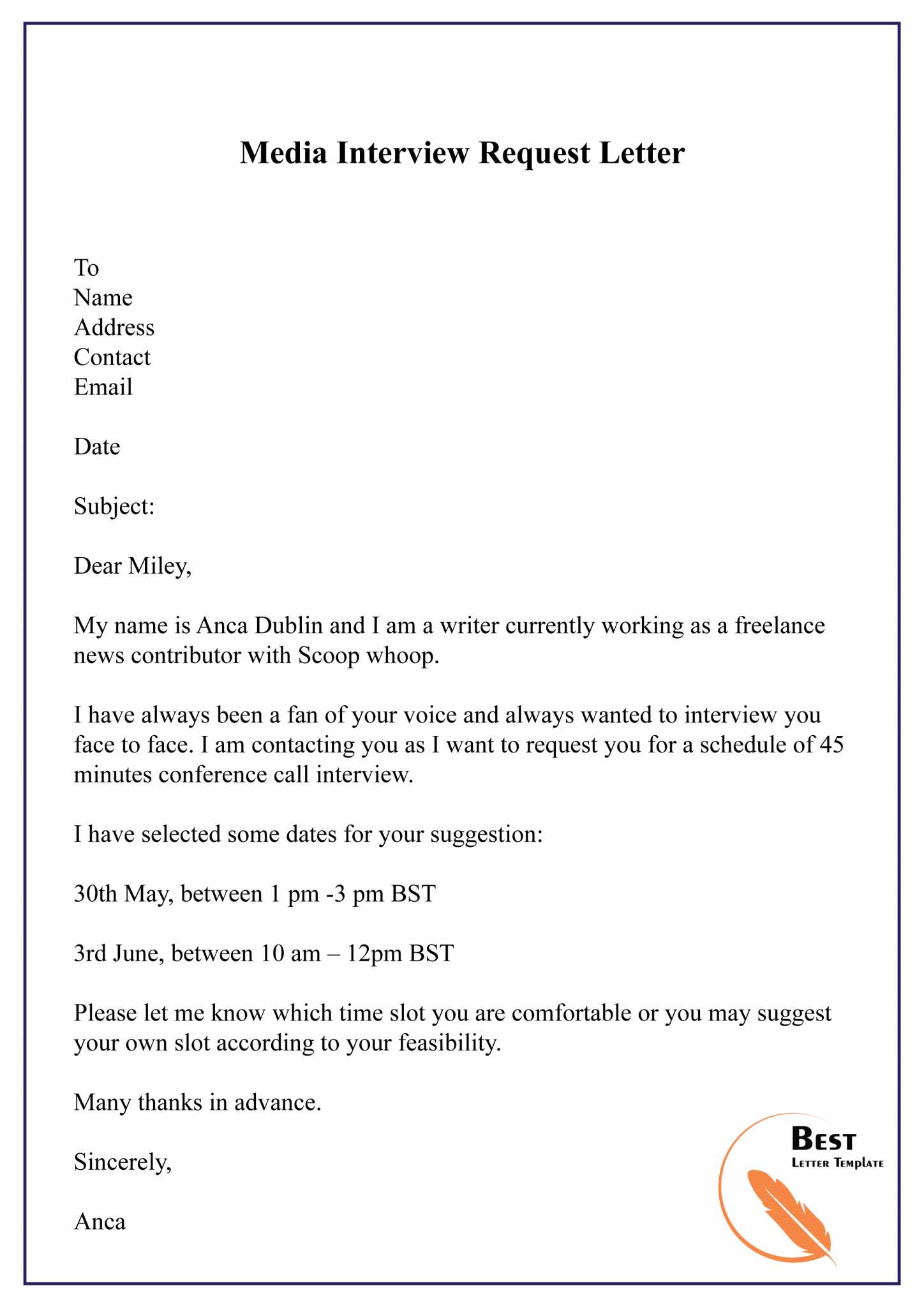
Address your letter directly to the recipient. Use their name to create a personal connection from the start. This simple step shows that you’re not sending a generic request, but reaching out to them as an individual.
Incorporate details that make the cause meaningful to the reader. Mention how their specific support will make a difference, and share a short story or example that highlights the impact of donations.
- Refer to shared experiences or interests when possible, such as previous involvement with your organization or a mutual connection.
- Clearly state why their donation is important at this time, avoiding vague statements. Be clear on what their contribution will directly support.
- Offer different donation options based on the recipient’s ability or preference, whether monetary or through time and effort.
Finish the letter with a thank you. Acknowledge the potential impact of their support, regardless of the amount, and express your appreciation for their consideration.
Including Legal Information and Tax Benefits
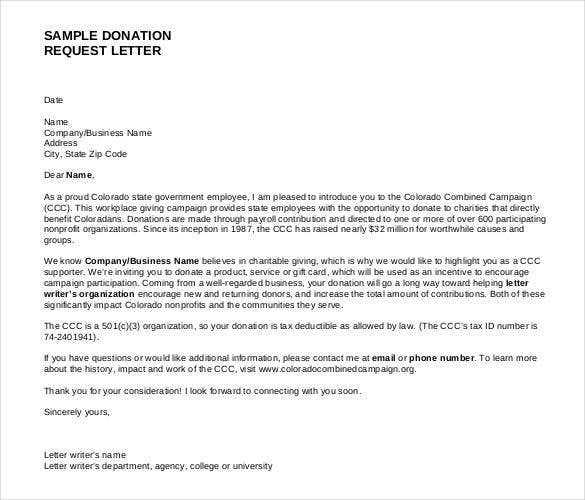
Clearly outline the legal framework and tax advantages of donations in your letter. Ensure that the donor understands the potential tax deductions they may receive by contributing to your cause. Mention the organization’s tax-exempt status under IRS 501(c)(3) or other relevant regulations, if applicable. This establishes credibility and reassures the donor that their contribution is being used properly.
Tax Deductibility of Donations
State how donations are tax-deductible for individuals and corporations. Include the specific section of the tax code that allows these deductions (e.g., Section 170 of the Internal Revenue Code). Offer guidance on how donors should record their gifts, including whether they need to obtain a receipt for donations over a specific threshold.
Legal Compliance
Confirm that your organization complies with all local, state, and federal laws regarding charitable contributions. Provide details on how you manage donations and ensure transparency. If applicable, mention any required annual filings, such as IRS Form 990, to reassure donors of the organization’s accountability and integrity.
How to Follow Up After Sending the Letter
Wait about a week before following up on your donation request letter. This gives the recipient time to review and respond to your appeal. Reach out with a friendly reminder through email or phone, restating the importance of the cause and the difference their support will make.
Be clear and direct in your follow-up. Start by thanking them for their consideration and briefly mention the donation request you previously sent. If you’re emailing, keep it short and polite, ensuring your tone remains positive.
Give the recipient options for how they can respond, whether through a direct donation, setting up a meeting, or requesting additional information. Avoid being too pushy; instead, offer assistance or clarification if needed. Always express gratitude, whether they decide to contribute or not.
Keep track of your responses, and don’t hesitate to follow up once more if you don’t hear back after your first reminder. Timing is key – stay respectful, and your continued engagement can make a lasting impact.
Common Mistakes to Avoid in Donation Letters
Be specific about the purpose of the donation. Vague statements like “your support is needed” fail to show how the contribution will be used. Clearly state how the funds will make a direct impact on the cause you’re supporting.
1. Overcomplicating the Message
Keep your letter straightforward. Avoid using complex language that might confuse or overwhelm the reader. Stick to short, clear sentences and a direct call to action.
2. Failing to Address the Donor Personally
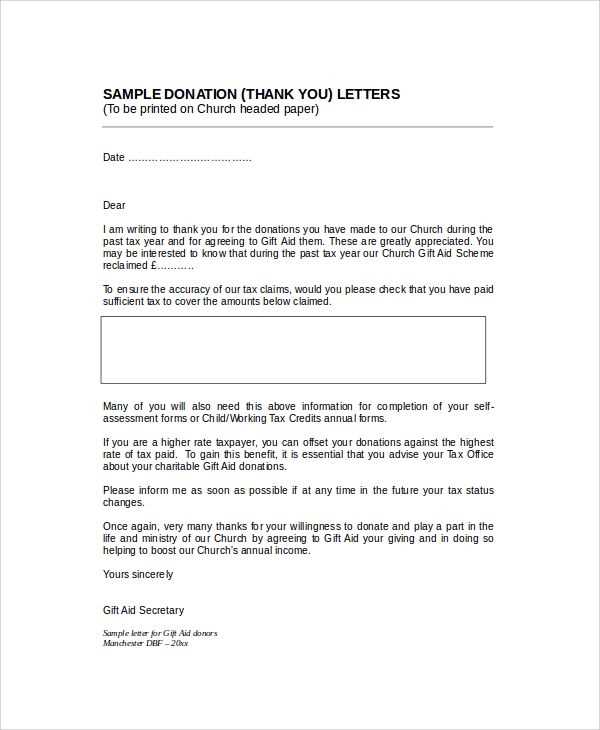
A generic greeting like “Dear Sir/Madam” doesn’t create a personal connection. Always try to address the recipient by name, and tailor the content to show why their specific support is valuable.
Don’t forget to thank the donor in advance. Let them know their potential gift is appreciated before they even decide to donate. Acknowledging their importance early creates a positive tone throughout the letter.
3. Ignoring the Tone of the Letter
The tone should match the nature of the cause, but also be warm and friendly. A too-formal or overly urgent tone can be off-putting. Find a balance that conveys the importance of the cause without sounding too pushy.
Make sure to review the letter for grammar and spelling mistakes. A well-crafted letter conveys professionalism and respect, which reflects positively on the organization.